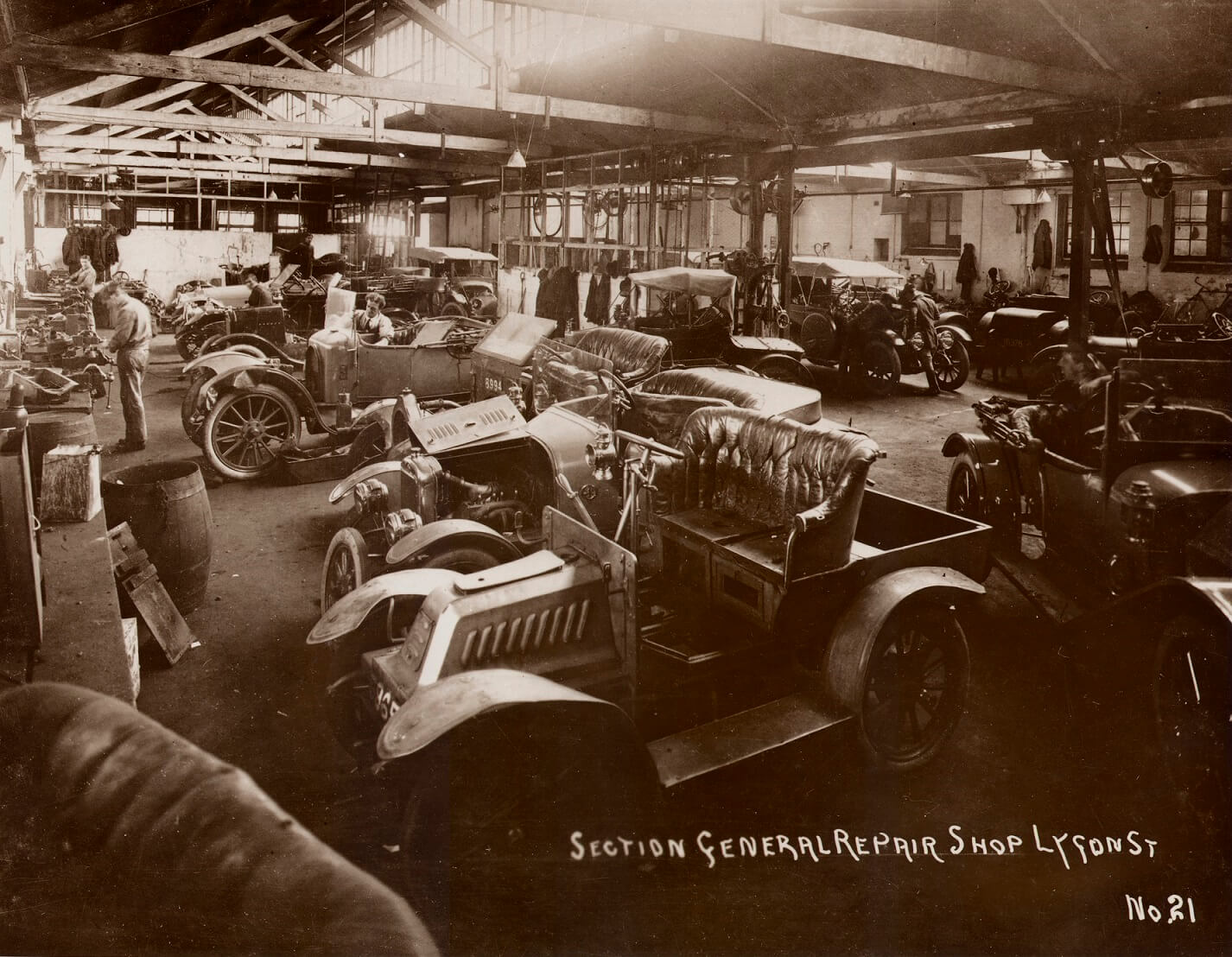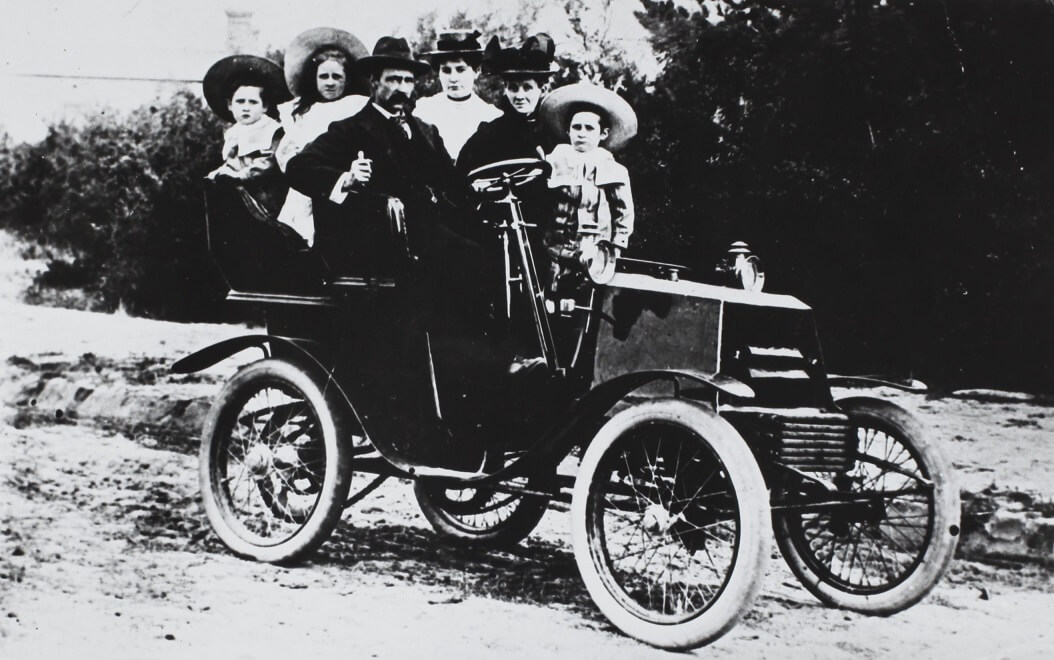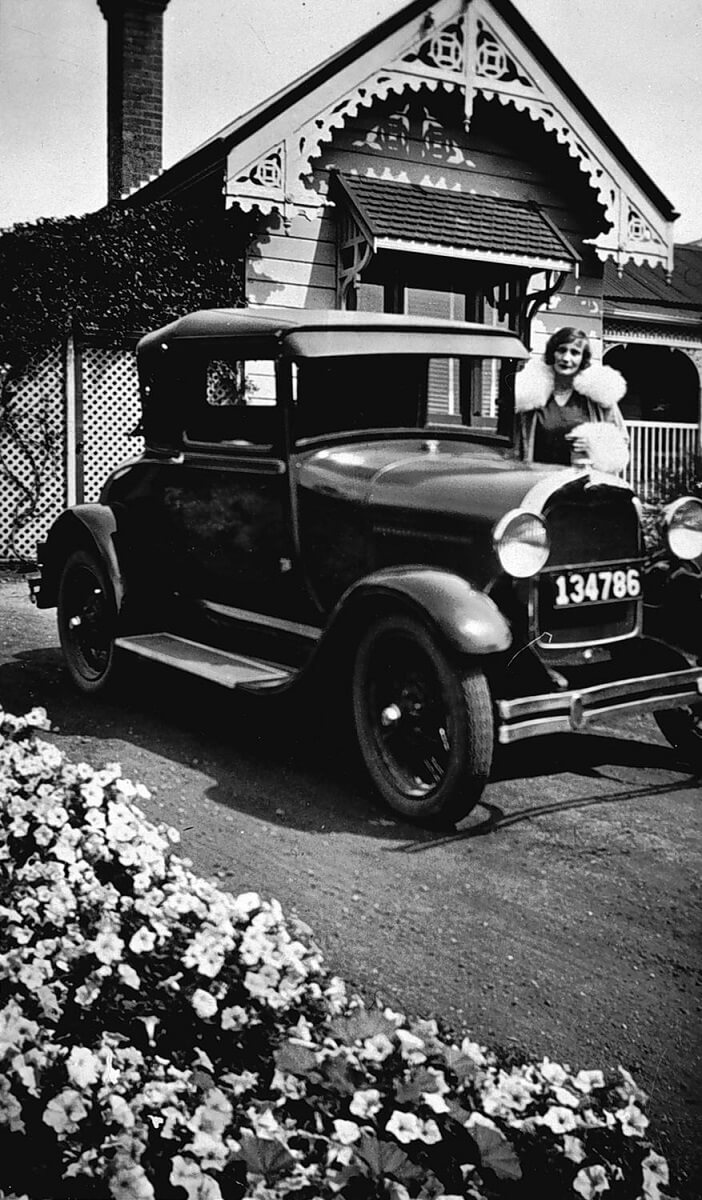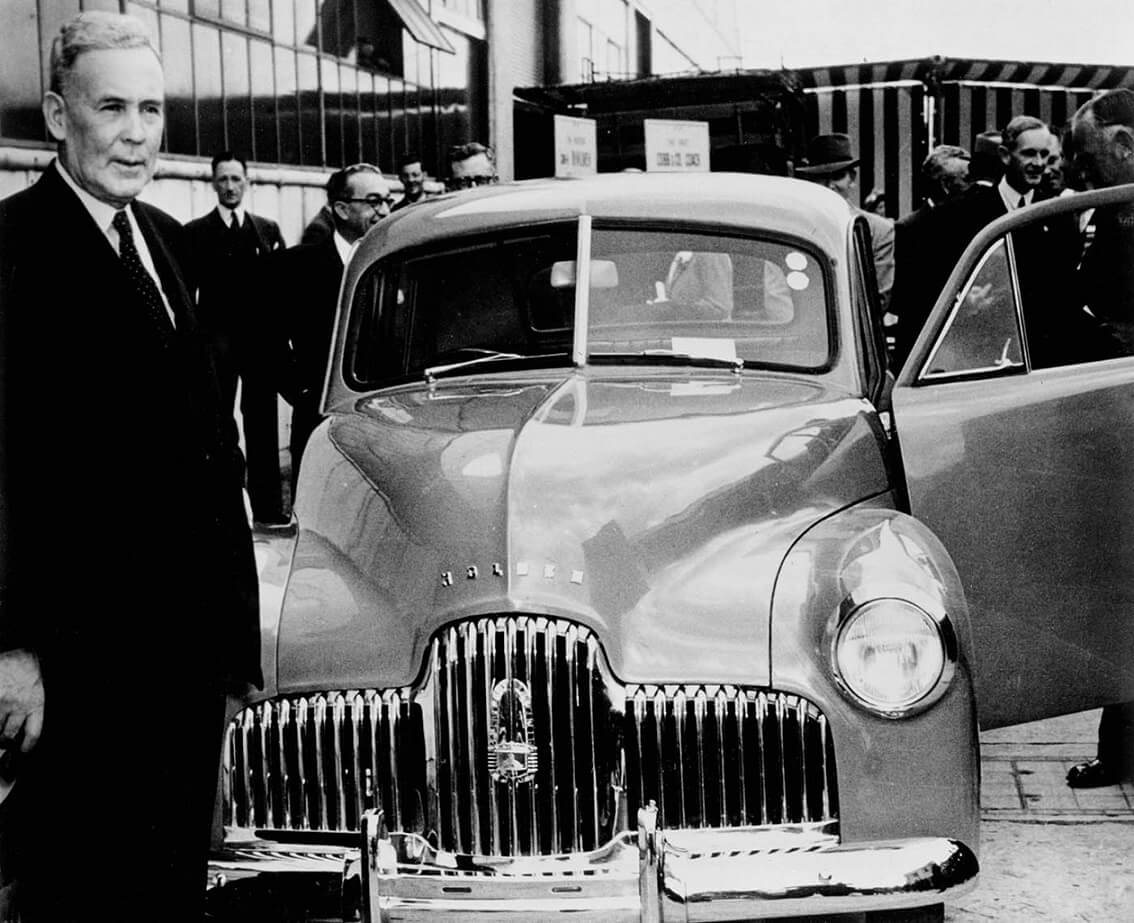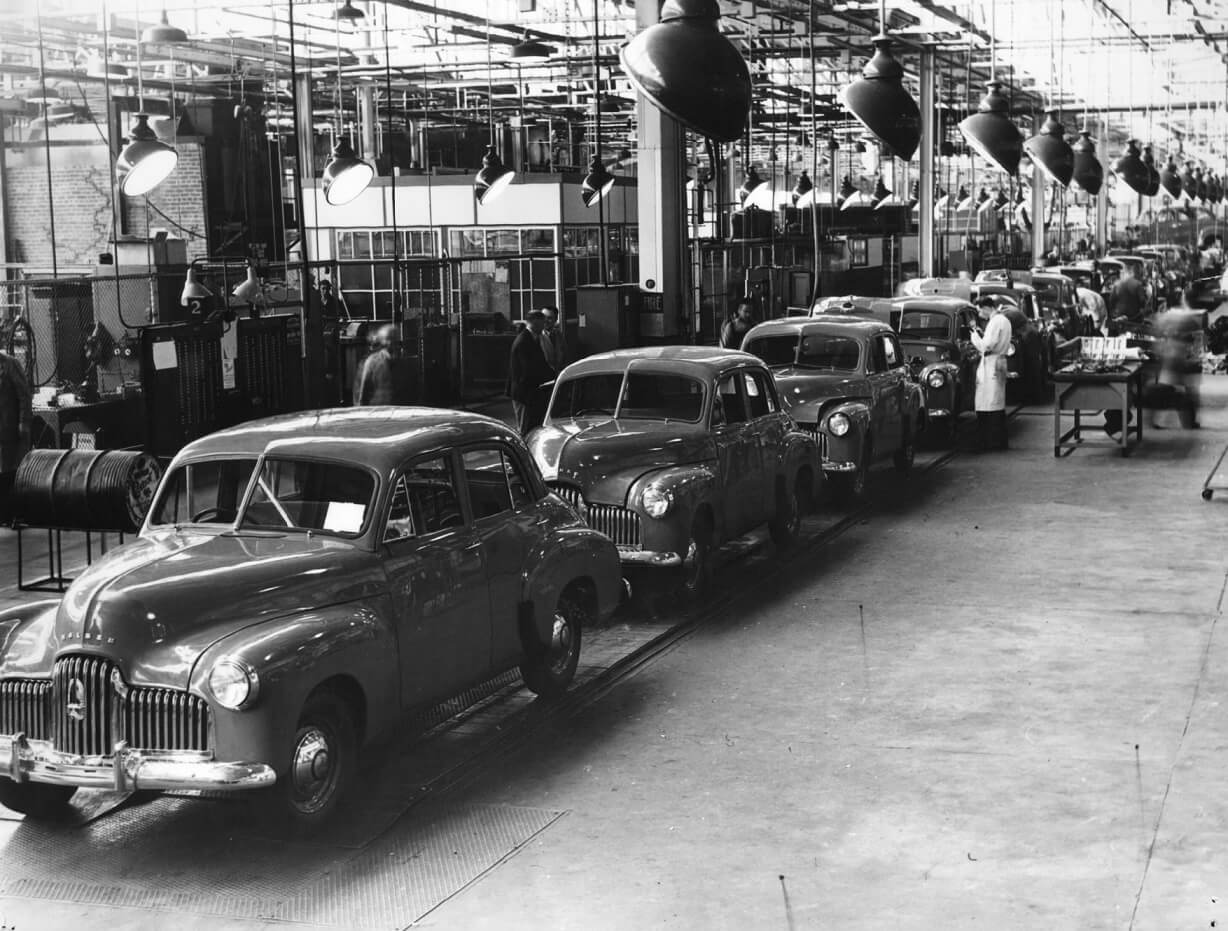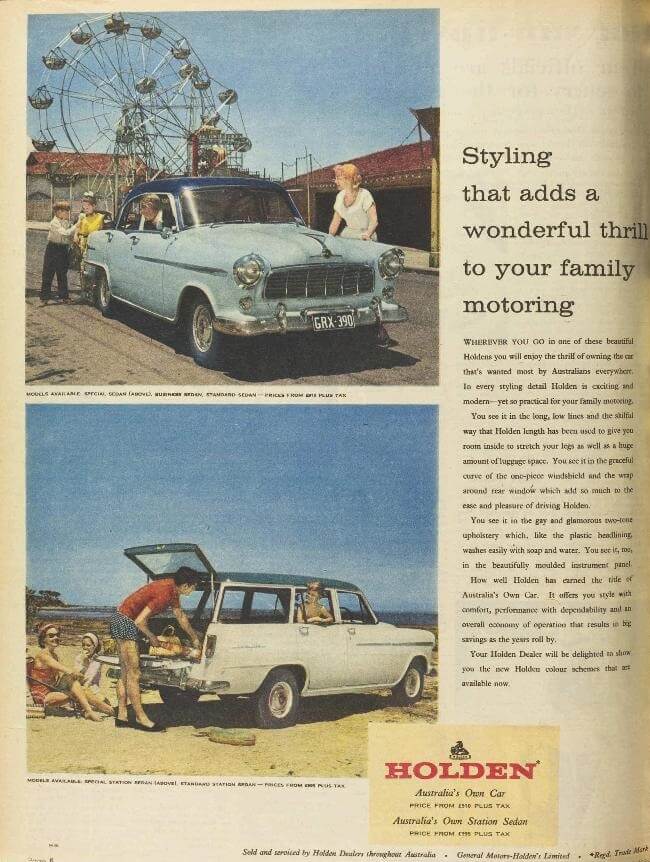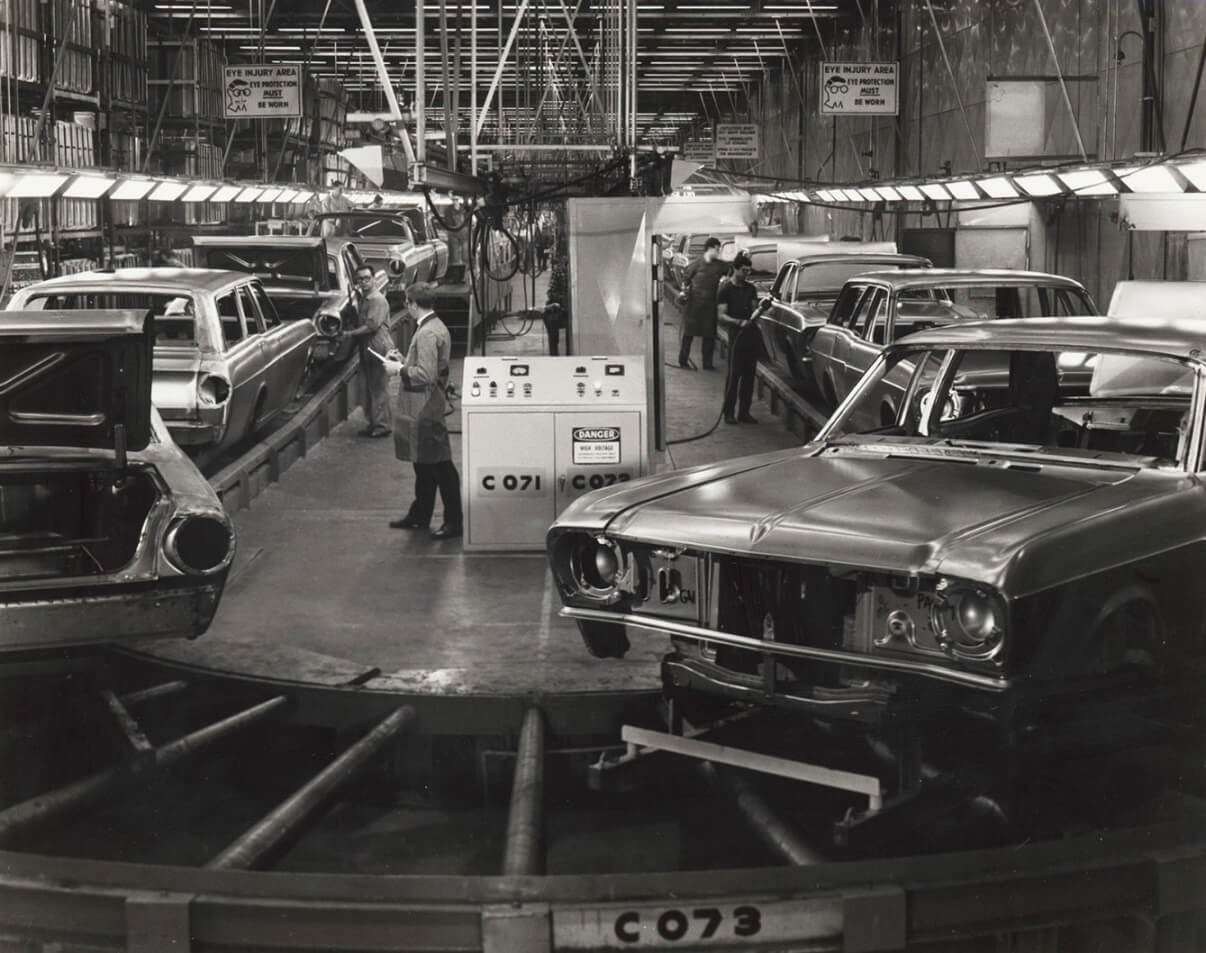One of the greatest areas of industrial expansion after World War II was the manufacture of motor vehicles, but the motor industry was well-established long before that. In fact the first vehicle with an internal combustion engine to be made in Australia was made as early as 1901 by a local company, the Tarrant Engineering Company, which was based in South Melbourne. The same company made the first fully-enclosed car in 1905.
General Repair Shop at the Tarrant Motor and Engineering Co, Lygon Street, c. 1920
Reproduced courtesy State Library Victoria
The Chandler family in a Tarrant No 2, September 1901
Reproduced courtesy Museums Victoria
W.H. Chandler was an early motoring enthusiast. The family owned the D & W Chandler general store in Brunswick Street Fitzroy.
But competition from American models was fierce, and increasingly local manufacturers focused on making car bodies, while the chassis and engines were imported. Regulations introduced after the First World War provided some protection to local makers, by limiting the import of car bodies to one for every two engines and chassis. This continued for most of the next two decades. Business expanded significantly during the 1920s and by 1926-7 over 90,000 car bodies were manufactured in Victoria, although the number of makers reduced over the same period, as a few large companies came to dominate the market. They included Holden’s (a South Australian company) and the Canadian branch of the Ford Motor Company. Ford built a major assembly plant in Geelong in 1925, while Holden’s (combined with General Motors from 1931) established a plant at Fishermens Bend. At first only a minority of Victorians could afford the new motor cars. In 1925 there was one motor vehicle to every 24 Victorians: by 1930 approximately one family in three owned a car, but the onset of the Depression slowed production significantly.
Postwar Victoria & ‘Australia’s own car’
The years after the Second World War were growth years for secondary industry in Victoria. The number of factories almost doubled, from about 10,000 in 1945 to 19,000 by the late 1960s. At its height in 1951 secondary industry employed over 40 per cent of wage earners in Melbourne. The motor vehicle industry and the manufacture of associated component parts were important contributors to industrial expansion. In 1948 the first car to be manufactured wholly in Australia rolled off the assembly line at Fishermens Bend. Dubbed ‘Australia’s own car’, the Holden 48-215, also known as the ‘Holden FX’, became an immensely popular family car. By 1958 it and subsequent models accounted for 40 per cent of all car sales. Ford also expanded in Geelong, while Volkswagon manufactured its popular ‘Beetle’ model at Clayton. Toyota also established a plant in Victoria in 1963, initially in Port Melbourne, but later at Altona.
With near full employment, the number of cars on the road grew exponentially. In 1945 there was one car for every 14 Victorians. By 1960 the ratio was one to five and by 1969 it was one to three, with one million cars on the roads. Apart from those employed in making the cars, motorcycles and other transport vehicles, thousands of others had work producing tyres, other component parts, and in distributing, advertising and selling motor vehicles.
Prime Minister Ben Chifley at the launch of the first Holden car at the Fishermens Bend factory in Melbourne, 1948.
Reproduced courtesy National Archives of Australia
End of the main assembly line in Plant 1, General Motors-Holden's at Fishermens Bend, Melbourne, 1951-52
Reproduced courtesy National Library of Australia
The family car
Increasingly Holden and other brands advertised their vehicles as ‘family cars’.
Advertisement for Holden ‘Australia’s Own Car’ in Australian Women’s Weekly, 19 February 1958.
Reproduced courtesy National Library of Australia
Advertisements like this one emphasised the new mobility of the Australian family, courtesy of the motor car. Family holidays, trips to the beach, picnics, or even just a Sunday drive, were all new and exciting possibilities offered by car ownership. Within a generation, the motor car moved from being a preserve of the wealthy, to an item within reach of every working family. Along with home ownership, the family car was soon part of the ‘Australian dream’.
To the outer suburbs
As post-war Melbourne’s population grew — from 2.3 million in 1951, to 2.9 million in 1961 and then 3.5 million in 1971 — the inner suburbs became increasingly crowded. Factories looking to invest in new, larger, production machinery had no room to expand, while congested inner-suburban streets made transport difficult. Industry began to look to ‘greenfield’ sites on the margins of the city, in a band of suburbs from Dandenong to Oakleigh. MacRobertson was one of the first to move. Not long after Macpherson Robertson died in 1945 the company moved its base to Ringwood but struggled to recoup the cost of the move. In 1967 the MacRobertson business was sold to Cadbury. The motor vehicle industries were more successful. General Motors-Holden moved to Dandenong in 1952 and was followed by several of its major component manufacturers and competitors like Volkswagon. Ford also chose to relocate but moved north to Broadmeadows.
Assembly of Ford Falcon cars at the Ford Broadmeadows plant, 1966
Photographer: Wolfgang Sievers
Reproduced courtesy State Library Victoria
Industrial workers followed the factories, and new suburban development mushroomed in Melbourne’s outer ring, leaving large areas of inner Melbourne depopulated. Collingwood for example had a population of over 35,000 in 1891 but had shrunk to 15,000 by 1981. Inner Melbourne struggled to replace its industrial base and suffered a long period of decline, before Melburnians began to realise the benefits of inner-city living. Eventually property developers followed cities like New York in converting industrial buildings into apartments, while others moved in to ‘gentrify’ former working-class houses in suburbs like Fitzroy and Carlton.
The rise and rise of the motor car
For decades factory workers lived close to their workshops. Most walked to work or, from the late-nineteenth century, rode a bicycle. But once the factories relocated to Melbourne’s margins, the distances were simply too great. Increasingly workers required a car to get to work and huge road systems followed to move them speedily from home to work. Large workers’ car parks were provided beside factory buildings. Many of these new suburbs were poorly served by public transport, making families all the more dependent on the car. As Melbourne’s boundaries reached ever further from the centre, the city soon sprawled over a huge area. In 2021 the greater metropolitan area occupied nearly 10,000 square kilometres.
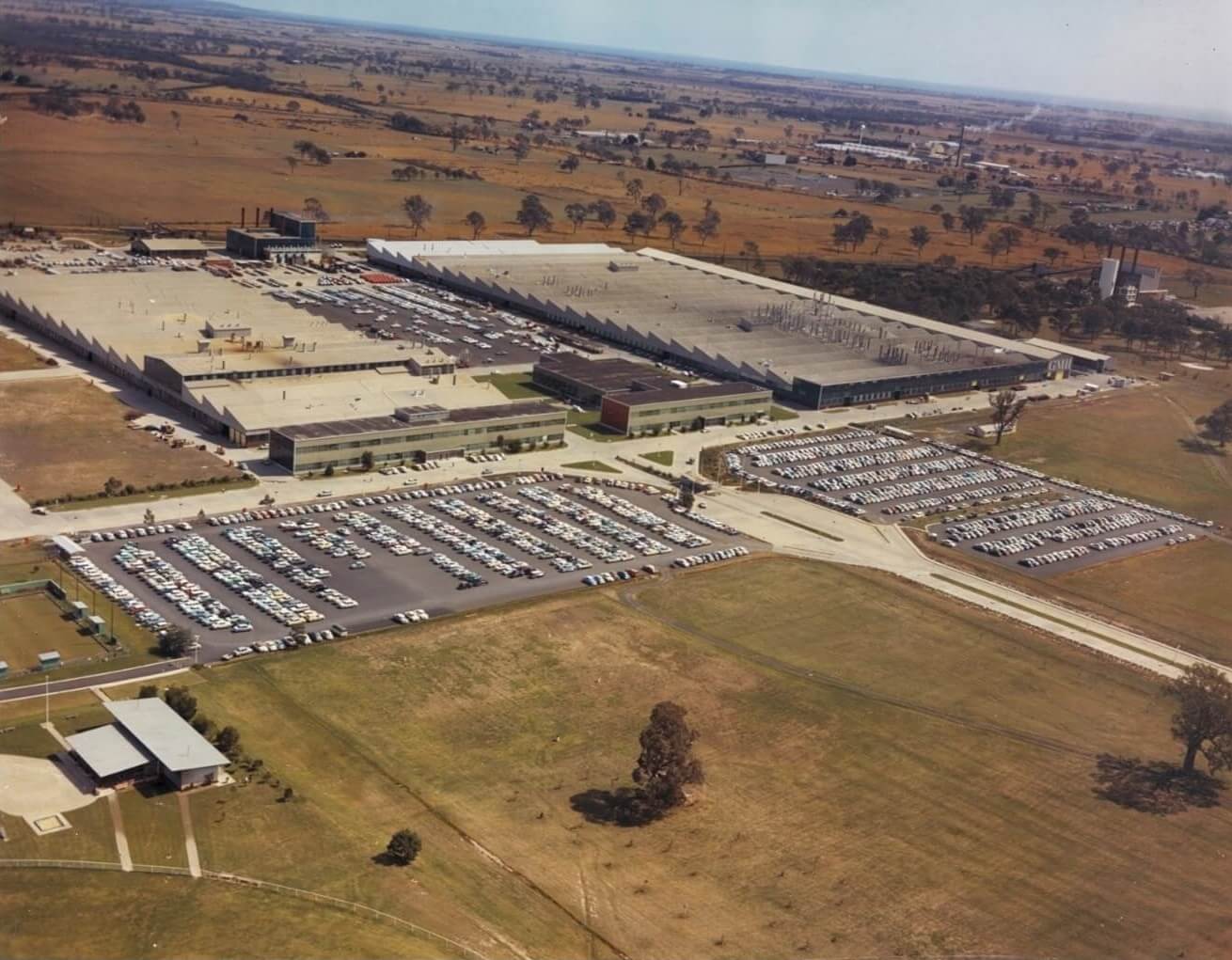
General Motors-Holden, Dandenong plant, c. 1964
Photographer Wolfgang Sievers
Reproduced courtesy State Library Victoria

